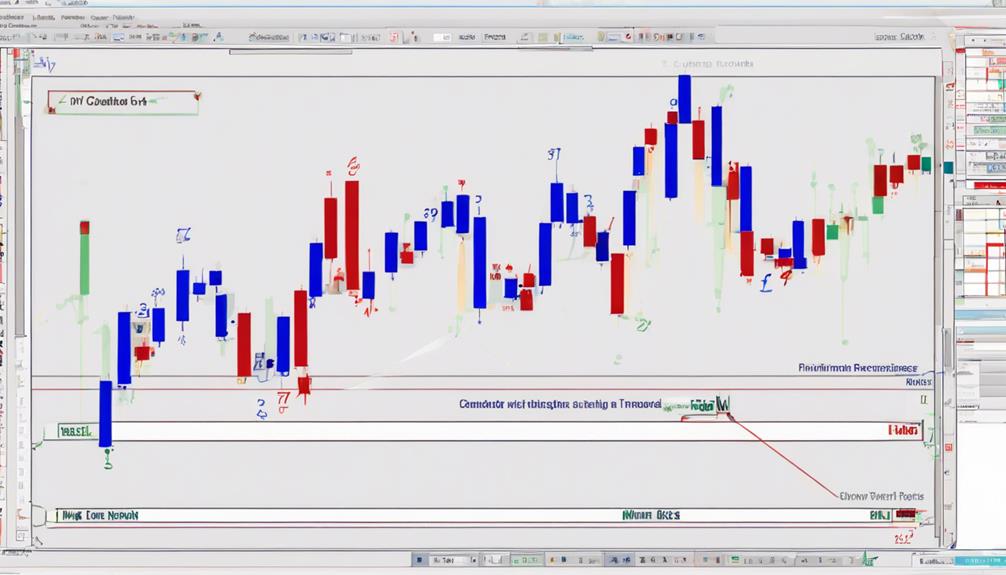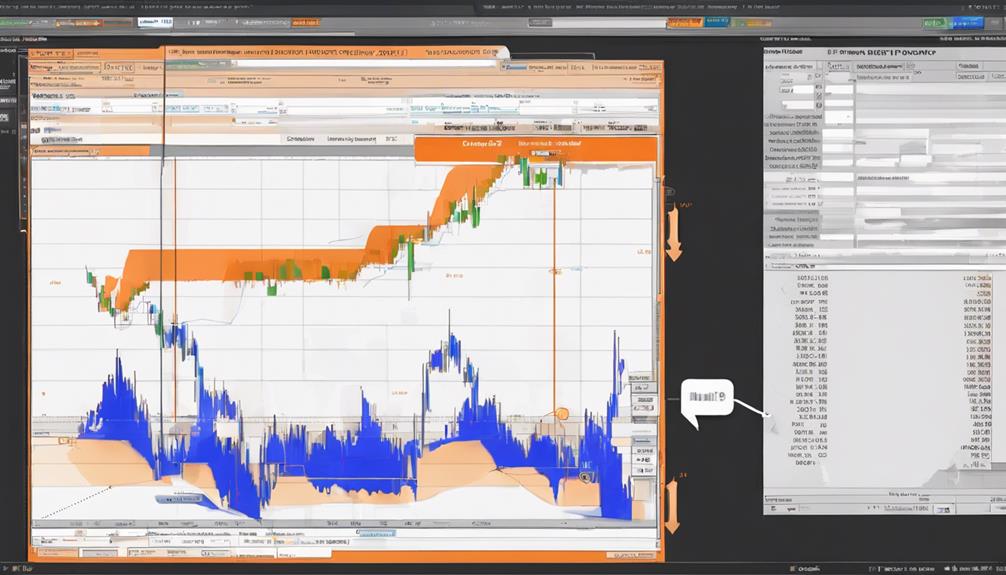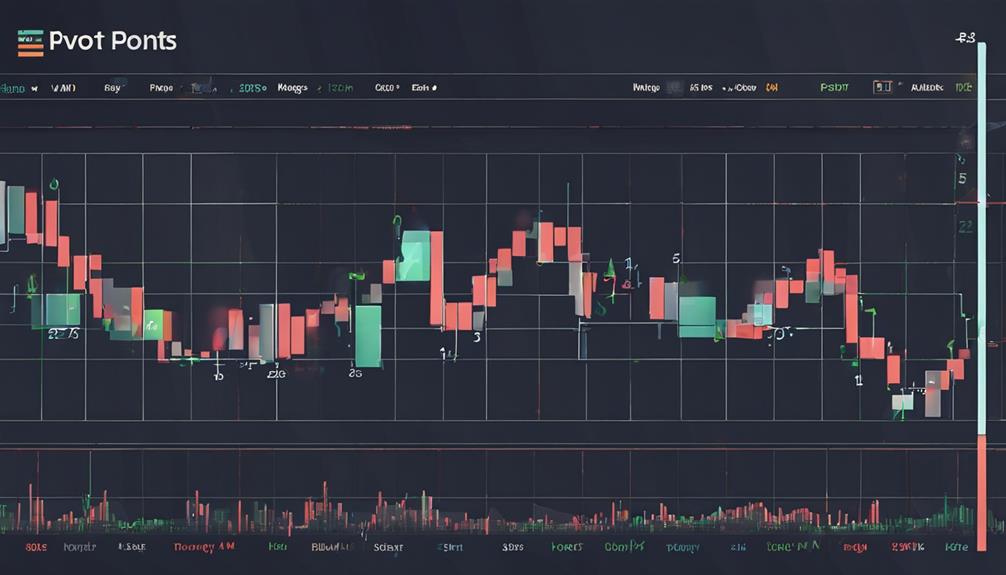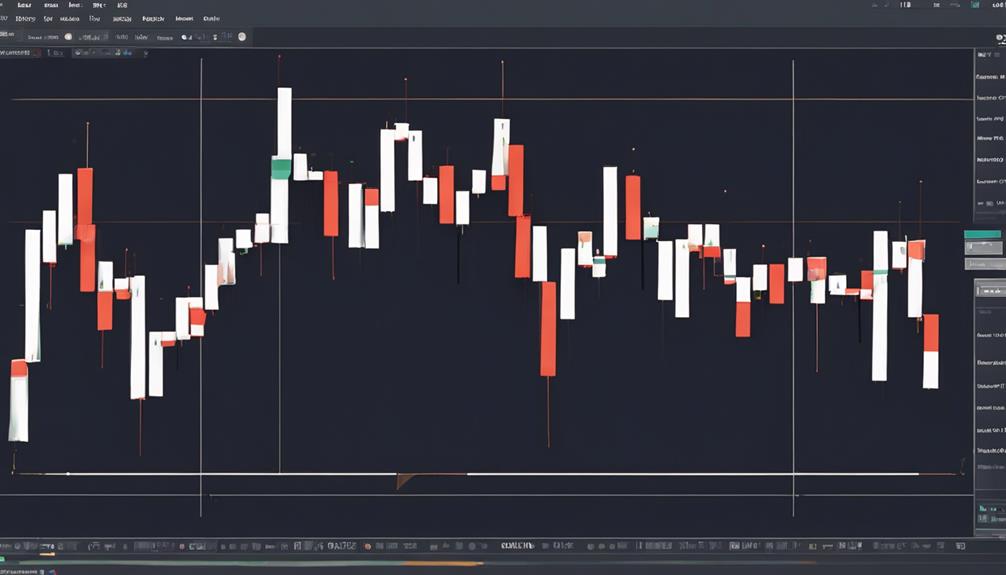Pivot points in technical analysis serve as critical markers that can significantly influence trading decisions. Understanding how these levels are derived and their implications on market sentiment is essential for traders seeking to navigate dynamic market conditions effectively.
By exploring the intricacies of pivot points, one can uncover valuable insights into potential price movements and optimize trading strategies. The interplay between pivot points and other technical indicators adds layers of complexity to market analysis, making it a compelling area for traders looking to enhance their decision-making processes.
Definition and Calculation of Pivot Points
The calculation and interpretation of pivot points serve as fundamental pillars in technical analysis for determining potential market trends and key levels in trading strategies. Pivot points are calculated by averaging the intraday high, low, and the previous day's close. This calculation involves summing the high, low, and close from the prior trading day and dividing by three to derive the pivot point.
Based on this pivot point, support and resistance levels such as S1, S2, R1, and R2 are projected. These levels are crucial for traders as they indicate potential price levels where the market may experience a reversal or a breakout. Day traders heavily rely on pivot points for making trading decisions, including entry and exit points, stop-loss placement, and profit-taking strategies.
Understanding these levels can provide valuable insights into market sentiment and help traders formulate effective intraday trading strategies. By incorporating pivot points into their technical analysis, traders can better navigate the market trends and make informed decisions.
Understanding Pivot Point Interpretation

Pivot point interpretation plays a critical role in guiding traders towards identifying key support and resistance levels for making strategic trading decisions based on previous day's price data. These levels, derived from pivot point calculations using the previous day's high, low, and close prices, are crucial indicators for traders.
Trading above the pivot point signifies a bullish bias, while trading below indicates a bearish bias. By utilizing pivot points, traders can establish entry and exit points, set stop-loss orders, and determine profit targets effectively. These levels also help in recognizing potential price reversal points in the market.
Understanding pivot point interpretation enables traders to make informed decisions, enhancing the precision of their trading strategies. By incorporating pivot points into their analysis, traders can navigate the market with greater clarity and confidence, leading to more successful trading outcomes.
Pivot Points Vs. Fibonacci Retracements

Comparatively, Fibonacci retracements offer a flexible approach in identifying potential price retracement levels, contrasting with the static nature of pivot points derived from fixed numbers based on the previous day's data. While pivot points provide static support and resistance levels for traders to plan their trades, Fibonacci retracements offer dynamic levels that adjust based on price swings.
Traders often use pivot points for making intraday trading decisions due to their clear-cut levels, whereas Fibonacci retracements are favored for their adaptability in recognizing potential retracement levels. Both tools are valuable for analyzing price movements and determining entry and exit points in the market.
Pivot points are ideal for traders seeking clear static levels, while Fibonacci retracements are more suitable for those who prefer dynamic levels that can adjust to price fluctuations. Understanding the characteristics of pivot points and Fibonacci retracements empowers traders to make informed decisions based on different types of price analyses.
Practical Application of Pivot Points

When implementing pivot points in real-world trading scenarios, traders utilize the calculated support and resistance levels to strategically plan their market entries and exits, manage risk through stop-loss orders, and set profit targets. These support (S1, S2, S3) and resistance (R1, R2, R3) levels derived from pivot points help traders identify potential price barriers. Understanding market sentiment is crucial; trading above the pivot point signals bullish sentiment, while trading below indicates a bearish outlook.
Moreover, pivot points are vital for analyzing price action and recognizing potential reversals in the market trend. Traders can optimize their trading strategies by combining pivot points with other technical indicators to confirm entry and exit points. By incorporating pivot points into their analysis, traders can enhance their decision-making process and adapt to changing market conditions effectively. Ultimately, the practical application of pivot points empowers traders to make informed decisions and improve the overall effectiveness of their trading strategies.
Advantages and Limitations of Pivot Points

An evaluation of the benefits and drawbacks of utilizing pivot points in technical analysis provides traders with valuable insights into their strategic decision-making process. Pivot points offer clear support and resistance levels, aiding traders in identifying potential entry and exit points within their trading strategies. Calculated using the previous day's data, these points serve as a valuable tool in guiding trading decisions.
However, it is essential for traders to remember that pivot points should not be the sole basis for executing trades. They are most effective when used in conjunction with other technical indicators to provide confirmation signals. Additionally, incorporating risk management strategies alongside pivot points is crucial for successful trading.
While pivot points can enhance a trader's ability to make informed decisions, understanding their limitations and using them appropriately within a comprehensive trading approach is key to maximizing their effectiveness.
How Are Pivot Points Utilized in Technical Analysis?
Pivot points in technical analysis are used to identify potential support and resistance levels in price movement. Traders use these pivot points to determine entry and exit points for trades. By analyzing the pivot points technical analysis, traders can make more informed decisions about market direction and potential price reversals.
Frequently Asked Questions
What Is an Example of a Pivot Point?
An example of a pivot point is a key level derived from the average of the previous day's high, low, and close prices in technical analysis. It serves as a crucial indicator for traders in identifying potential price reversal zones.
What Is the Concept of Pivot Point?
A pivotal concept in technical analysis, pivot points are calculated using key price levels to determine potential support and resistance. They aid traders in forecasting market movements and making informed trading decisions.
What Are the Points S1 S2 S3 R1 R2 R3 and PP in the Pivot Points?
S1, S2, S3, R1, R2, R3, and PP are significant levels derived from pivot points in technical analysis. These levels aid traders in identifying support and resistance zones, serving as crucial references for setting entry and exit points in trading strategies.
How Do You Trade With Pivot Points?
Trading with pivot points involves utilizing key support and resistance levels derived from previous price action to make informed decisions on trade entries, exits, and stop-loss placements. Traders utilize pivot points to gauge potential price reversal points efficiently and effectively.
Conclusion
In conclusion, pivot points in technical analysis are like a compass in the sea of trading, guiding traders to navigate through potential support and resistance levels.
By calculating these significant price levels, traders can make informed decisions on entry and exit points, enhancing their trading strategies and risk management.
While pivot points have their advantages and limitations, they are a valuable tool for traders looking to identify key price levels in the market.
